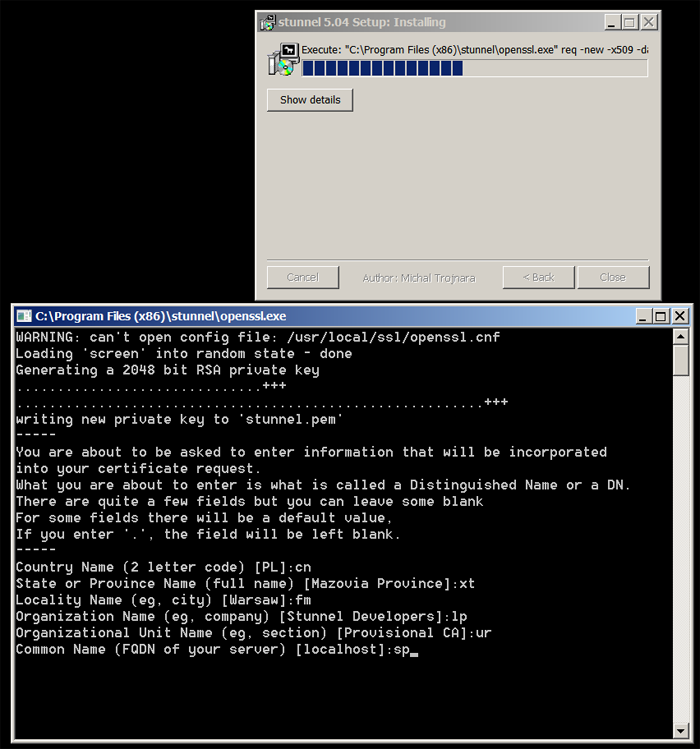
Simply click (or touch, w/e!) on the dropdown menu at the top of the text window, and select psksecrets.txt: This file is accessible from the same window. There is a dedicated file for PSKSecrets in the app, called psksecrets.txt. The question that arises is that where and how do we make and link the external files (like PSKSecrets, CAfile, cert, etc)? options (these are needed for proper communication and handling of the stunnel process by the SSLSocks).
#STUNNEL OPENVPN ANDROID#
You may remove the client = yes option if for whatever reason you want to make your Android device act as a stunnel server, but DO NOT remove the foreground = yes and pid =. The format is exactly as specified in stunnel documentation, and more or less all the options could be used.Ĭouple of default options are already specified in the file. This is where the magic happens! This section, holds your nf file. You can use this to troubleshoot your stunnel config. The amount of log that you get, depends on the debug value set in the stunnel config file (default is 5). This section, outputs the stunnel process log. When you are done with your setup, you can start the stunnel process here (and then stop it later on). Just open that link in your phone and hit “Install”.
#STUNNEL OPENVPN DOWNLOAD#
InstallingĪssuming your device uses ARM architecture (which very likely does), you can simply download the app from Google Play:. The app does not need any special permissions to function. If your Android device does not use ARM architecture, you need to compile the stunnel from source for your device architecture first, then use the binary and compile the SSLSocks app. That’s the great part, you don’t need to compile it yourself! While the README file does outline the steps necessary to source the Android binary and compile the app yourself, the compiled version of the app (armed with the required stunnel binary for android), is available on Google Play:. The rest of this post is dedicated to provide a basic documentation for the said app in hoping that it could help others to make use of it, and to also give back something to the author of the app to know that his app is actually being used. This app however, comes with a little to no documentation and could be a little tricky to make it work for the first time. The VPN part is not done yet but the stunnel part is working fine. Originally intended to be a socks5 VPN through TLS. The app name does not remotely give the impression of stunnel, mainly because it was…

In the end, I was able to find a decent little-known open-source app which is still maintained by the developer and also regularly updated to include the latest stunnel binary. There are not so many of them, and most are either not maintained anymore or require you to compile the app yourself (which lets face it, is way less than ideal!) I spent quite a good amount of time trying to find a suitable and decent app. So we need an unofficial GUI (a wrapper if you will), an app that could provide the required front-end to the user and then pass the execution to the stunnel binary.


While making an Android GUI is in the stunnel author’s TODO list, there is still no official GUI available.

Meaning it can hardly be used by end users, and is mainly suitable for developers. Chances are though, that your device is running on ARM and you are ready to go.Īnother thing to note, is that the stunnel compiled version, is CLI only. Since we’ll be using the compiled binary, you may need to compile stunnel yourself for your specific Android architecture before continuing 1. Even though most Android devices run on ARM, this is particularly important to note for those devices that are not (e.g, Android-x86). This file is compiled for ARM architecture.


 0 kommentar(er)
0 kommentar(er)
